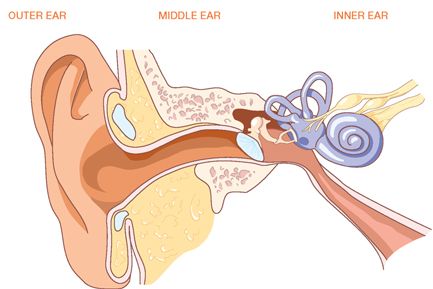Ear surgery is most commonly performed to improve hearing or alleviate pain due to otitis media, or to repair perforations. Less common surgeries are necessary to improve congenital deformities. Certain types of conductive hearing loss can also be repaired surgically. A thorough examination by an ENT physician and audiologist is necessary to determine if your hearing loss may be surgically improved.
COCHLEAR IMPLANT SURGERY
A cochlear implant is an electronic device that restores partial hearing to individuals with severe to profound hearing loss who do not benefit from a conventional hearing aid. It is surgically implanted in the inner ear and activated by a device worn outside the ear.
Read More
TYMPANOPLASTY
Perforations do not always heal with medical management alone. Thus, in some cases, microsurgery may be necessary to close the perforation. This surgery is called tympanoplasty.
Read More
MYRINGOPLASTY
Myringoplasty is a surgical procedure used to treat perforated eardrum (a hole in the eardrum). It is usually performed under general anesthesia, but can also be done under local anesthesia. The surgeon uses a graft to cover the hole. The graft used in the myringoplasty can be either a piece of tissue from elsewhere in the patient’s body or a gel-like substance.
Read MoreMASTOID EXPLORATION
Also known as mastoidectomy is a surgical procedure to remove diseased mastoid air cells from the mastoid bone. It is also used to remove abnormal tissue in the ear known as cholesteatoma. Mastoid exploration or mastoidectomy is usually performed under general anesthesia and it takes around 2 to 3 hours to complete the procedure.
Read MoreEAR PIERCING
Ear piercing is nothing but creating a hole either on the ear lobes or cartilage to allow the insertion of earrings. But medical ear piercing ensures safety with the use of sterile products and hygienic methods when compared to other traditional methods. It involves using single-use sterile tools that remain packed until their use to
Read MoreEAR LOBULE SUTURING
Ear lobule suturing is a surgery to correct the tears or splits in the earlobe. It can be performed to correct either partial, full, or multiple tears in the earlobes. Ear lobe suturing is a simple procedure that takes 10 to 15 minutes and performed under local anesthesia to comfort the patient. The procedure involves cleansing the area,
Read MoreFACIAL NERVE DECOMPRESSION
Facial nerve decompression is a complicated surgery to relieve abnormal compression on the facial nerve that causes facial paralysis. It requires advanced surgical techniques and should be performed by an expert to avoid risks and complications in the future after the surgery. The procedure involves the removal of the bone that constricts the facial nerve to expand.
Read MoreMASTOIDECTOMY
A cholesteatoma is a smelly, white mass of skin scales and debris in the middle ear. It can cause hearing loss and extensive destruction of bones. The surgery done to cure cholesteatoma is called mastoidectomy.
Read More
MYRINGOTOMY WITH TRANSTYMPANIC VENTILATION TUBE INSERTION
After the specialist confirms that fluid is present behind both eardrums, further medical treatment is often advised. If the fluid has been present for over 12 weeks, surgical drainage of the fluid is often indicated.
Read MoreOSSICULOPLASTY
Ossicular chain is the small bones of the middle ear which are articulated to form a chain for the transmission of sound from the tympanic membrane to the oval window. In its early stages, cholesteatoma tends to attack the ossicles, the small bones conducting sound from the eardrum to the inner ear.
Read MoreSTAPEDECTOMY
The operation is commonly called a stapedectomy or more correctly a stapedotomy. This operation has traditionally been carried out under a local anaesthesia.
Read More


